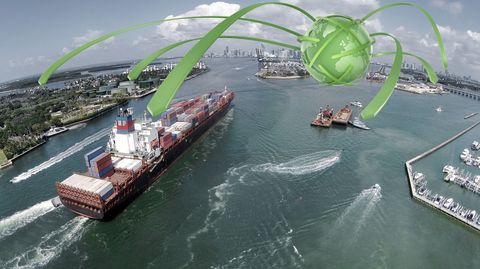Unified customs standards have been one of the most important drivers of trade growth within the European Union since its inception, with a key benefit of EU membership being the opportunity to trade internationally without needing to deal with the bureaucratic burden caused by multiple sets of incompatible standards.
However, the unification goals of the customs union have not always been reflected in the design of the various IT systems used to process digital data, with many countries continuing to use different technological solutions - creating unnecessary extra work for businesses.
As such, a recent meeting of the Economic and Financial Affairs Council (Ecofin) has discussed the idea of centralizing the development of the customs union's IT systems in order to solve this problem and bring the EU a step closer to its ideal of seamless cross-border trade within the bloc.
An inefficient approach
In spite of recent efforts to harmonize trade laws and standardize the procedures employed by European businesses, significant duplication continues to affect the development and operation of IT systems, resulting in considerable excess costs.
Toomas Tonist, Estonia's finance minister, said during the Ecofin meeting: "We have learned from the past that having 28 different IT systems is not sustainable. At the moment, the cost of developing them separately is estimated to be up to €2 billion; the costs for businesses come on top of that.
"We see that there is a common understanding that future customs union IT systems development requires a change of policy in order to gain efficiency and cut costs for member states and trade, although the best method has yet to be decided."
Potential for improvement
Fortunately, the EU has an ideal opportunity to tackle this problem once and for all with the introduction of the Union Customs Code (UCC), the new framework regulation governing EU rules and procedures for customs that came into effect in May 2016.
In addition to bringing customs laws across all EU member states into closer harmony, the code also mandates that all data exchange between customs authorities and businesses must be done electronically from the beginning of 2021. This means that all member nations are working to develop new IT systems at the same time, with the same end goal in mind.
By ensuring a centralized approach, the cost of development could be brought down considerably, while also ensuring a more uniform application of EU customs legislation and risk management, better interagency cooperation between customs agencies and border guards, and greater agility in the future when updates and changes may need to be made.
Perhaps most importantly of all, it will mean that businesses will not need to link their systems with the interfaces of 28 member states, while also providing them with better access to a unified online customs service. This will help them to bolster their competitiveness at the same time as cutting costs.
What is being done?
Currently, the EU accounts for 16 per cent of overall global trade, with EU customs authorities collecting 15 per cent of the bloc's total revenues. Eurofin believes that a more consistent and centralized approach to IT development will help to maximize the union's performance in this regard.
As such, Mr Tonist has called for further expert discussions to form an agreement on how to best proceed with this goal, suggesting that a pilot project could be instrumental in demonstrating the benefits of this approach and garnering wider support.
In the meantime, work on the implementation of the UCC continues to gather pace, with new systems being put in place to manage data pertaining to exporter registration, tariff information, customs decisions, special procedures and different types of guarantee, among other factors.
It is hoped that all of this work will allow the EU to establish a paperless, fully electronic and interoperable trading and customs environment, thus ensuring the union is able to meet its own goals for a future-proof digital single market.






